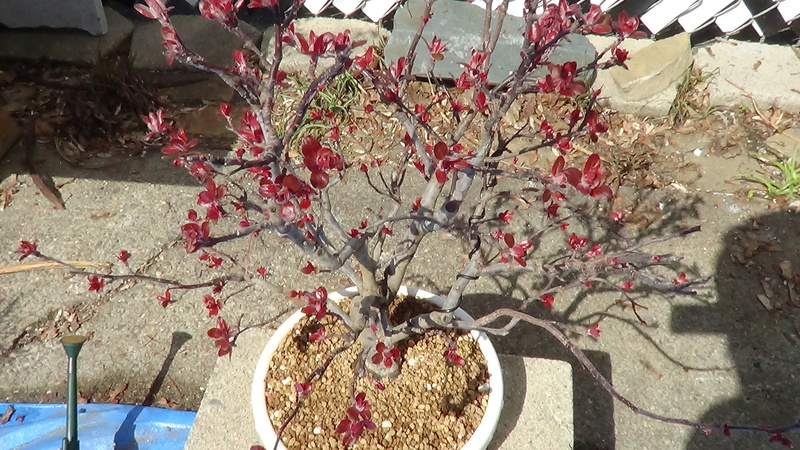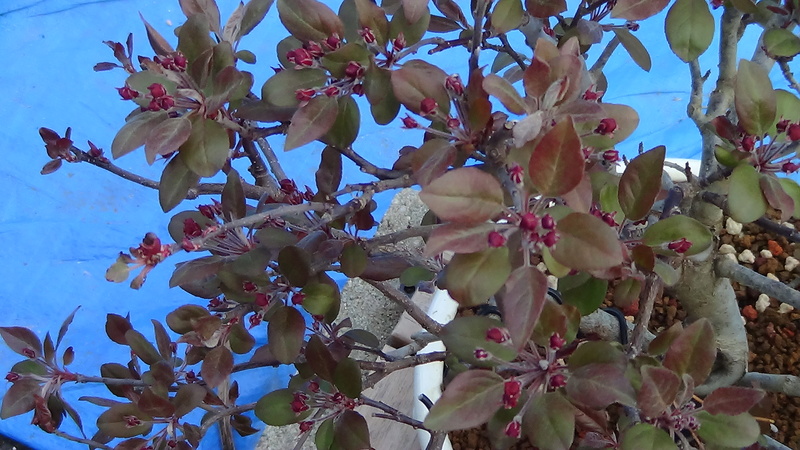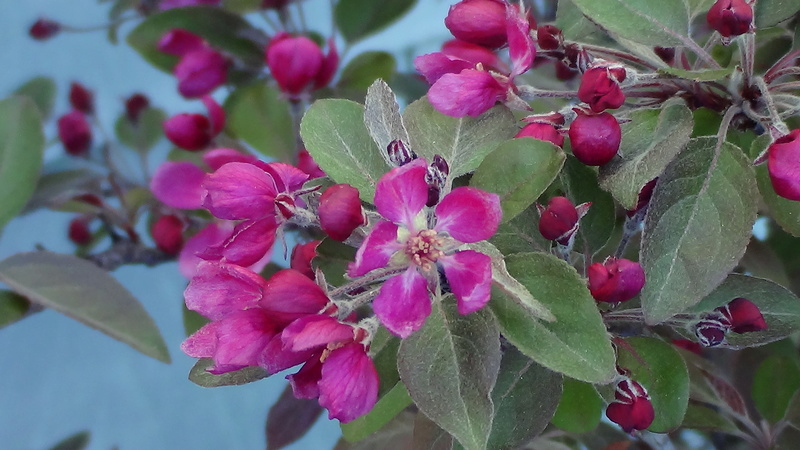A purple leaf crab apple
5 posters
Page 1 of 1
 A purple leaf crab apple
A purple leaf crab apple
I like the deciduous trees for their constant changes of appearance throughout the whole year. Maybe they do not have the same dignity and calm that is characteristic for the old specimen of the pines or the wild, dynamic beauty of junipers or yews. Their beauty consists in the joy they bring to our lives - kisses under the cherry blossom, apple pie, plum brandy - just to name a few...
On the top of the list of the deciduous trees is the purple leaf crab apple for me. And here it is why:
The purple of the new growth
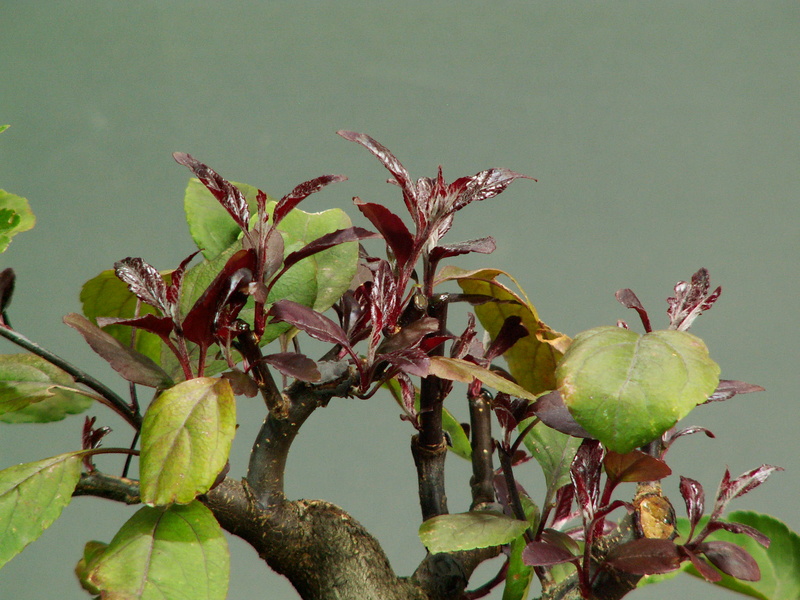
The beauty of the flowers
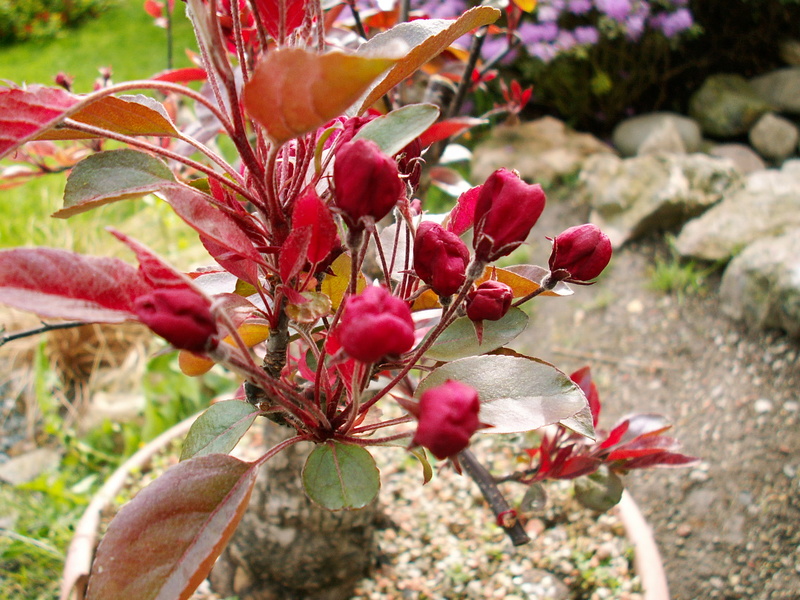
The shot of fruits will come next year
The autumn colours
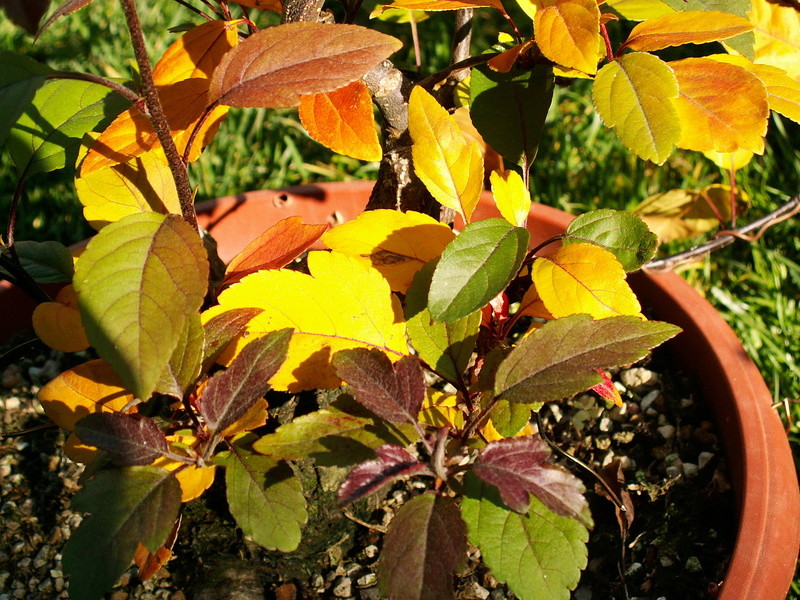
The shots above are related to this pre-bonsai. July 2016, new growth, before wiring. Current height excluding the sacrifice top branch 19 cm +/-

The yamadori in 2013
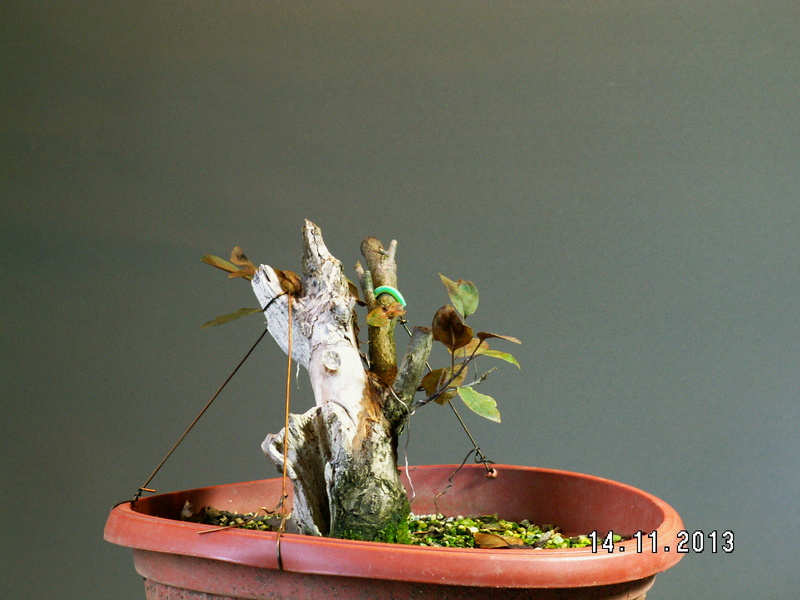
On the top of the list of the deciduous trees is the purple leaf crab apple for me. And here it is why:
The purple of the new growth

The beauty of the flowers

The shot of fruits will come next year
The autumn colours

The shots above are related to this pre-bonsai. July 2016, new growth, before wiring. Current height excluding the sacrifice top branch 19 cm +/-

The yamadori in 2013

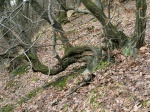
Vlad- Member
 Re: A purple leaf crab apple
Re: A purple leaf crab apple
I too, love deciduous all through the year, in leaf, without leaf, in autumn....ive never seen a purple crab before, its progressing well and nice colours 
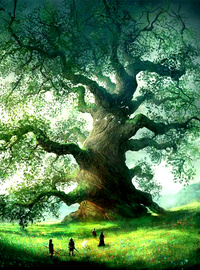
BobbyLane- Member
 Autumn colors? No chance yet. The little Malus follows its own calendar...
Autumn colors? No chance yet. The little Malus follows its own calendar...
End of October:
Regadless of what the other trees are busy with this small apple tree is still focused to finish its growth.
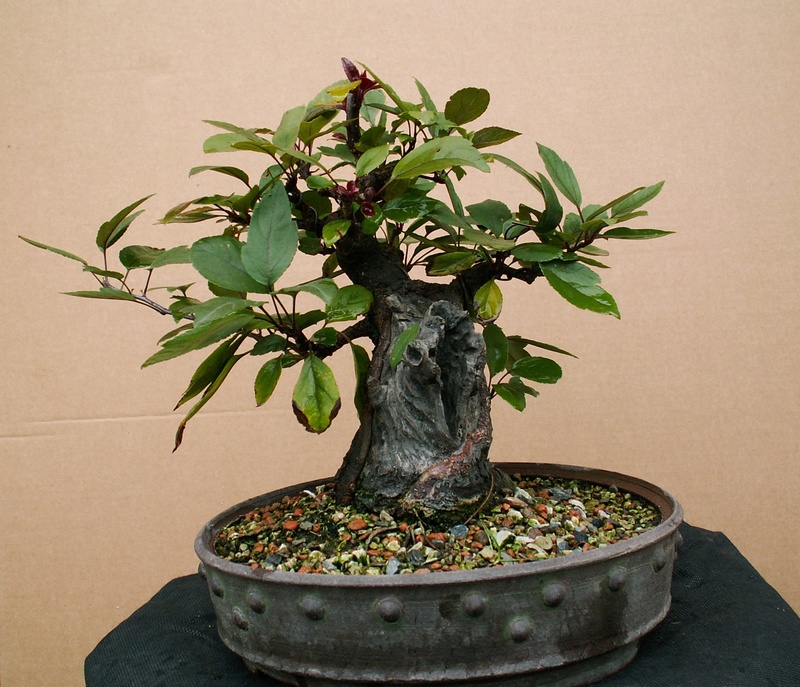
First half of November:
Few nights with a temp drop close to -7°C (19°F ). I have expected that the leaves will be frozen...No way. They are there and "seemingly still working"

Current height: 23 cm. The leaves are far too big, but I guess that this will be solved within the next few years and a pair of sharp scissors. Happy to see the small branchlet down on the right.
Regadless of what the other trees are busy with this small apple tree is still focused to finish its growth.

First half of November:
Few nights with a temp drop close to -7°C (19°F ). I have expected that the leaves will be frozen...No way. They are there and "seemingly still working"

Current height: 23 cm. The leaves are far too big, but I guess that this will be solved within the next few years and a pair of sharp scissors. Happy to see the small branchlet down on the right.

Vlad- Member
 Re: A purple leaf crab apple
Re: A purple leaf crab apple
Nice surprise Lance. I have not seen many of them as a bonsai. The new growth has amazing colour... Very nice tree.

Vlad- Member
 Re: A purple leaf crab apple
Re: A purple leaf crab apple
Nice colors!!!
@ LanceMac10 : May I ask which is the scientific name of the red leaf crab apple?
@ Vladimir : How would you rate the strength of the wood of apple trees? There is a feeling that it is not long lasting...
@ LanceMac10 : May I ask which is the scientific name of the red leaf crab apple?
@ Vladimir : How would you rate the strength of the wood of apple trees? There is a feeling that it is not long lasting...

my nellie- Member
 Re: A purple leaf crab apple
Re: A purple leaf crab apple
Hi Alexandra, good to hear from you. In terms of wood hardness it is close to a cherry, a pear tree or even to an oak or a hornbeam. You are right about the resistance of its deadwood to rot.
A rot could be a problem for any part under the soil level but that applies for most other species anyway. I use an acrylic resins - ( solakryl or paraloid ) to protect these under soil areas. The deadwood above the soil level - the rot is less problematic there - I use a treatment with lime sulphur or a natural pine resin solution in etanol.
As far as this small Malus is concerned - I think that a significant section of the current deadwood may be converted into an uro. Or better to say I will be forced by the rot to do it. But then I am sure the tree will stay around for good dozens of years.
Btw. wood resistance - it is quite interesting topic. The wood of a true yamadori ( a tree collected from areas where it has only a very limited growth ) has significantly harder wood and will be more resilient then a typical garden tree or a tree produced from a seed of the same species with ample supply of nutrients and water. I also believe that the resistance to rot of such trees is much higher.
A rot could be a problem for any part under the soil level but that applies for most other species anyway. I use an acrylic resins - ( solakryl or paraloid ) to protect these under soil areas. The deadwood above the soil level - the rot is less problematic there - I use a treatment with lime sulphur or a natural pine resin solution in etanol.
As far as this small Malus is concerned - I think that a significant section of the current deadwood may be converted into an uro. Or better to say I will be forced by the rot to do it. But then I am sure the tree will stay around for good dozens of years.
Btw. wood resistance - it is quite interesting topic. The wood of a true yamadori ( a tree collected from areas where it has only a very limited growth ) has significantly harder wood and will be more resilient then a typical garden tree or a tree produced from a seed of the same species with ample supply of nutrients and water. I also believe that the resistance to rot of such trees is much higher.
Last edited by Vlad on Wed Nov 21, 2018 12:01 pm; edited 2 times in total (Reason for editing : update)

Vlad- Member
 Re: A purple leaf crab apple
Re: A purple leaf crab apple
my nellie wrote:Nice colors!!!
@ LanceMac10 : May I ask which is the scientific name of the red leaf crab apple?
Nellie,
This crabapple is a hybrid and as such it's botanical name is Malus x purpurea
Randy

Randy_Davis- Member
 Re: A purple leaf crab apple
Re: A purple leaf crab apple
Hi, Vladimir!
Thank you for your detailed answer.
Randy, thank you too!
Thank you for your detailed answer.
Randy, thank you too!

my nellie- Member
Page 1 of 1
Permissions in this forum:
You cannot reply to topics in this forum







